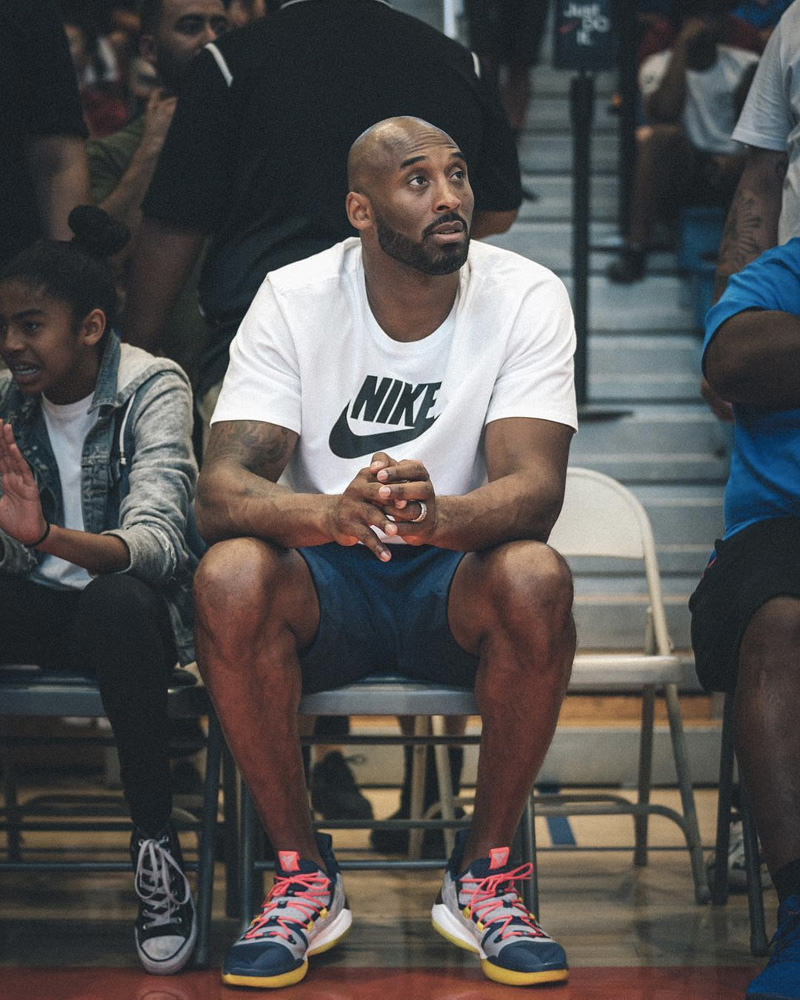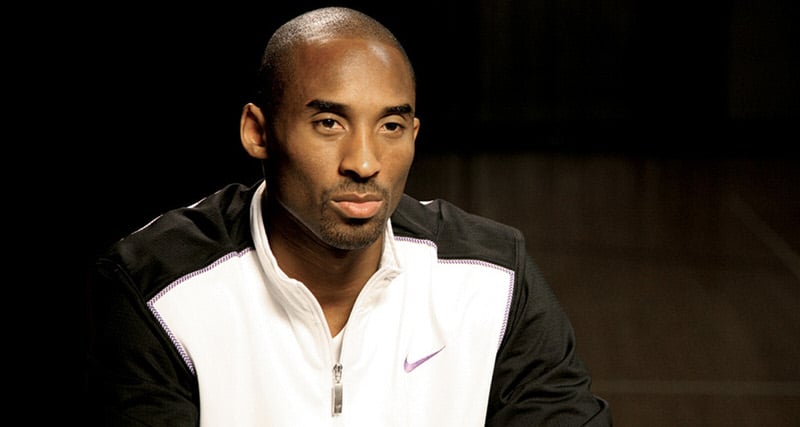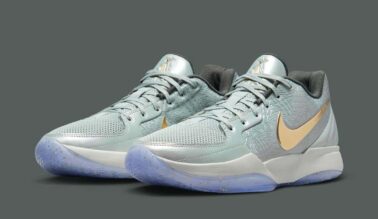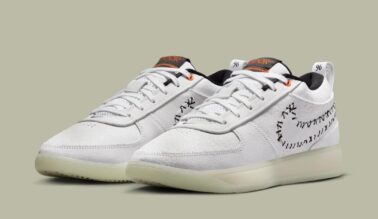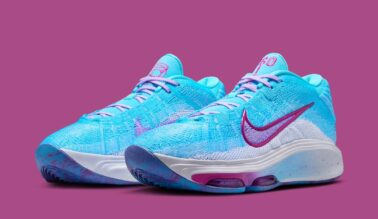This post may contain affiliate links. Please read our disclosure policy.
words // Nick DePaula:
As folks around the social media and blogosphere landscape prepared to celebrate one of two (2!!) manufactured holidayesque celebrations for NBA icon Kobe Bryant this week, the stories of the Laker legend’s career in advance of #KobeDay were extensive.
There was the endless videos of his end of game clutch shots, Kobe’s longtime “Mamba Mentality” and the anecdotes and quotes that spoke to his approach. and more closely to our world, his awesome series of signature sneakers that spanned for nearly the entirety of his two decade career, and beyond.
While the newest Kobe AD is rightly getting its fair share of love for its sleekened design and sharp use of tactical materials, we figured we’d take a look back today on 8/24 as well, diving into some of the layers and details from throughout Kobe’s Nike run that might’ve gone unnoticed. Read ahead for a look at a batch of Bryant insights, featuring old interview quotes from Kobe itself.
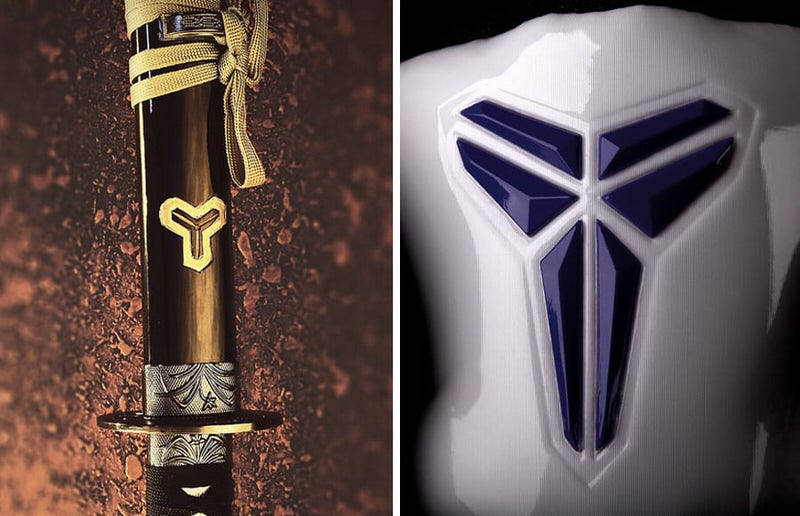 His logo was inspired by the movie Kill Bill
His logo was inspired by the movie Kill Bill
When the Huarache 2K4 was originally created, there was an ill-fated “8 Ball” logo that almost made it to the shoe’s heel counter, that would’ve represented Bryant’s jersey number at the time, and not much else. As it turned out, his eventual logo was far sleeker, and representative of his attacking mindset, given its direct inspiration from the sword holster design seen in the movie Kill Bill.
“The logo, to me, is more of an inspirational symbol, in terms of what you use as fuel and what you use to drive you,” Bryant told me years ago. “That symbol is where I store that and where I hold that fuel.”
The fuel apparently worked for Kobe, as he of course dropped 81 points in the very first shoe to feature his “Sheath” logo along the tongue, the Zoom Kobe 1. Most of his sneakers have featured the geometric logo along the tongue ever since.
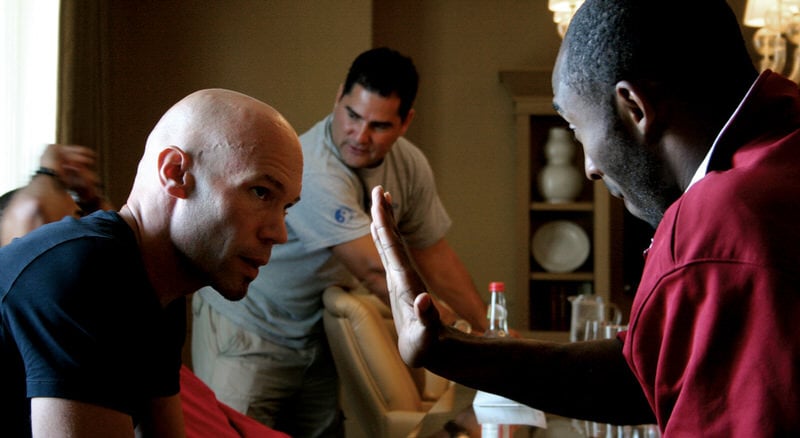 Eric Avar has designed the look of the line ever since the Kobe 3
Eric Avar has designed the look of the line ever since the Kobe 3
When you think of Michael Jordan’s personal involvement on his storied series, Tinker Hatfield immediately comes to mind. For Kobe Bryant, the same could be said about equally legendary designer Eric Avar, who has helped to define the no frills design language that’s pushed the Kobe series into its own tier of performance products.
“The most special shoes that I enjoy the most is when me and Avar are sitting around and we come up and just brainstorm man, because that’s just having certain guys that are on the same wavelength and get each other,” says Bryant.
As he often describes it, he’ll come to Avar with a simple insight or request — “I want to reduce my reaction time” — and Avar will come up with some new way of locking in Kobe’s foot better on plants, to help maximize his first step. Other times, Avar will bring Bryant a new idea or a new advanced innovation from his fellow Kitchen team of masterminds, as a means to push his footwear forward.
“I’m always around a bunch of people who are competitive and just as competitive as I am, or just as passionate about the sport as I am,” Kobe says. “I’m not looked at as being different or anything like that because I’m ultra competitive. I’m just around a bunch of people who are exactly the same way as I am.”
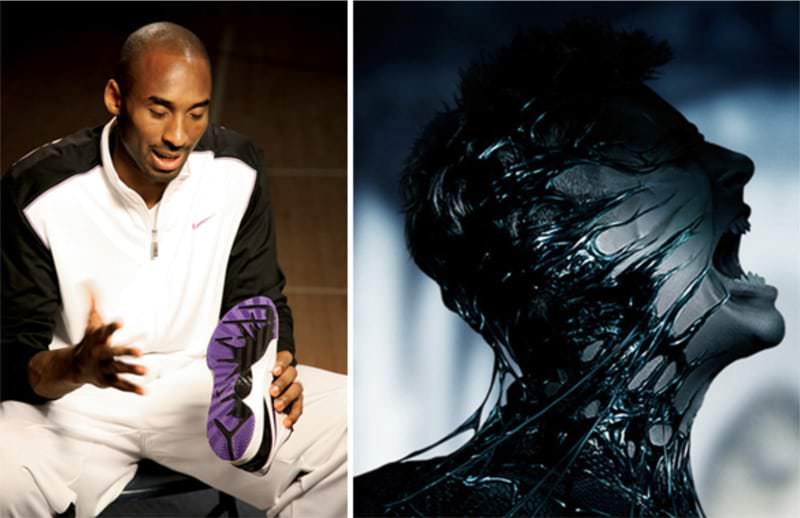 Soccer, in addition to Venom from Spiderman, inspired the Kobe 4
Soccer, in addition to Venom from Spiderman, inspired the Kobe 4
Sure, the Kobe 4 was a big departure from the 3 and the starting point of veering towards a true low cut, something Bryant felt would “cut weight” as they looked to “continue to slice it down.” He was partly inspired by the low heights of soccer cleats, which fascinated the ever-curious Kobe. He argued that soccer players ran and cut just as much as NBA players throughout the course of a match.
As he shared with then-developer Tom Luedecke during the process, he was also looking for a sneaker that improved on fit and stance.
“The Spiderman 3 Venom character is something that Kobe talked about to us,” Luedecke shared at the time. “He got really hyped about this character and it was the notion of the shoe feeling like a second skin.”
While the insight from Kobe helped to inform the slope and fit of the upper, the outsole featured a subtle nod to the iconic scene in the movie, with a graphic flowing out from the shoe’s pivot point, speaking to the skin’s closely wrapping nature that the team was hoping to achieve.
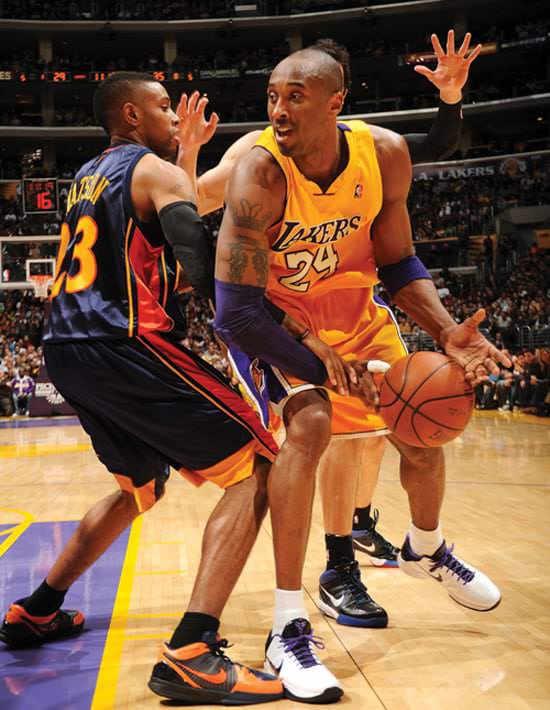 Kobe Took NIKEiD to New Heights
Kobe Took NIKEiD to New Heights
While Nike’s Morph Skin series debuted signature shoes on the iD platform, the Zoom Kobe 2 was the first signature sneaker to appear on NIKEiD in featured form both online and at select Nike Town locations worldwide. It wasn’t until two years later when the Kobe 4 launched though, that things really took off.
By the time Bryant’s fifth shoe launched, he was soon finding himself matched up against defenders, sometimes several, each wearing his own prior model. It was something he had to get used to seeing on a nightly basis, partly because there were times he barely recognized his own shoe after someone spun it through their own NIKEiD filter, like CJ Watson’s infamous chili red and orange pair.
“I was like, ‘Wait a minute, he did something real interesting with that one,'” laughed Bryant. “It’s pretty cool to see though, because you know — yes, it’s a signature shoe — but it gives everyone its own life to it. I think that’s very important to have.”
The Kobe 4 and its follow-ups took signature shoes to new heights on iD in both NBA and amateur play. Kobe’s collection on iD opened up the floodgates for LeBrons, KDs and Kyries to follow.
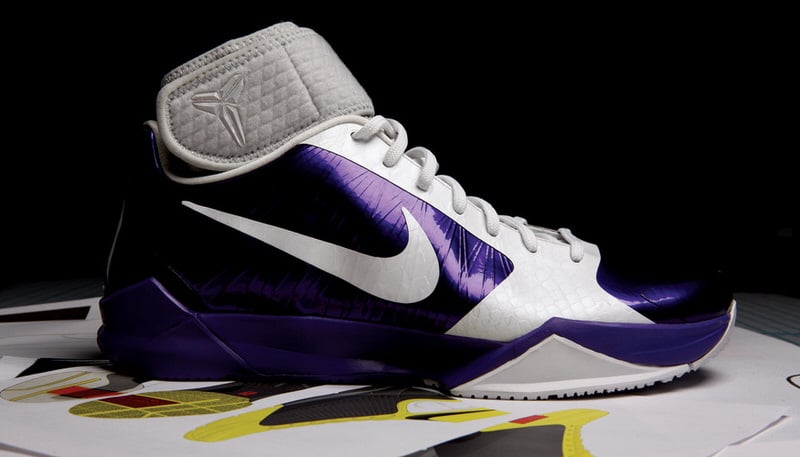 The Kobe 5 almost introduced an earlier version of the Kobe System
The Kobe 5 almost introduced an earlier version of the Kobe System
When the Kobe 7 launched, the vaguely dubbed “Kobe System” marketing campaign carried the sneaker almost instantly, thanks in part to a star-studded list of commercial cameos from the likes of Serena Williams and even Kanye West.
The shoe did incorporate a “system” of sorts, with two interchangeable insoles that offered up different benefits. The “Fast” midsole had an attached standard tongue, along with both heel and forefoot Zoom Air units for responsive cushioning. The “Strong” setup offered a taller strapped up collar, along with a Lunarlon footbed for a more firm ride.
As it turns out, the System idea was a concept in the works well in advance, sampled up on the Kobe 5 two seasons prior, while the Innovation Kitchen team took their time before finally releasing the short-lived modular approach.
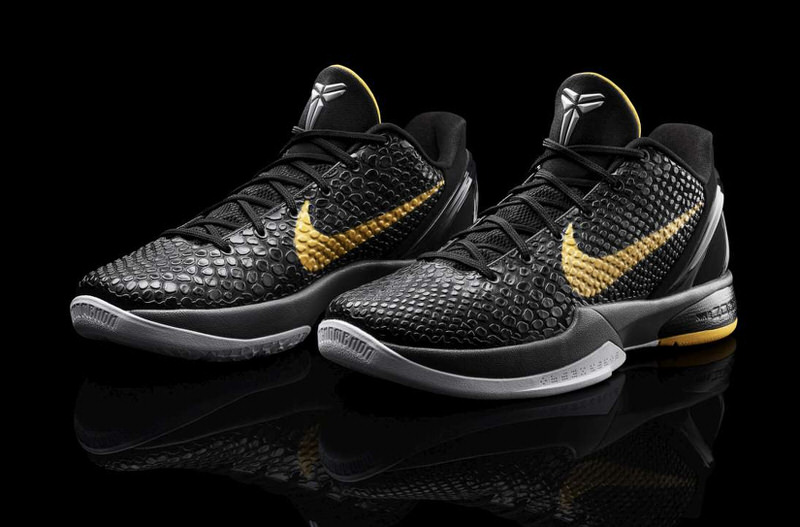 Several people at Nike were scared of the “Mamba” skin on the Kobe 6
Several people at Nike were scared of the “Mamba” skin on the Kobe 6
Building off of the Kobe 4 and 5’s breakthrough success and widespread adoption amongst basketball players and casual fans alike, naturally, Kobe and Avar were looking to take a huge risk and incorporate a snake skin-like texture across the entire upper of the sixth shoe.
“Oh man, some people in marketing hated it!” joked a member of the team working on the shoe at the time.
While the Kobe 4 and 5 featured a then-daring lower collar height, the designs were still fairly familiar, classic and refined, translating to being huge sellers that helped to reinvigorate the Nike Basketball category. Some folks in sales and marketing initially pushed for a compromise early on — release some versions with the snake skin, and then also drop additional colors in a more safe synthetic paneled look, like on the prior two models. Folks were terrified that the scales would be too polarizing for a mass audience, and hurt the sales of what was an emergingly successful formula.
Avar and Bryant held firm, and it didn’t matter much anyway, as the 6 went on to be worn around the league, saw several much-coveted collectible colorways launch, and was eventually yet another beloved model of the Kobe series that people still gravitate to years later.
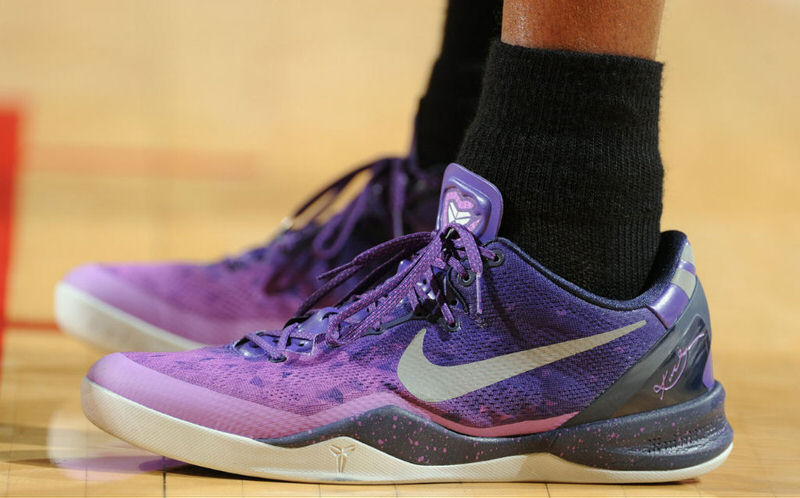 The Kobe 8 almost had a toe Swoosh, vetoed by Bryant
The Kobe 8 almost had a toe Swoosh, vetoed by Bryant
For the 2012 Olympics, Nike launched their newest edition of their flagship Hyperdunk team shoe, featuring an entirely new Swoosh placement along the toe. According to those close to the process at the time, it was also discussed that the Kobe 8 for the following 2012-13 season would also feature a toe Swoosh, as part of the brand’s new design direction and a shift toward larger branding.
As it turns out, Kobe vetoed the idea early on, and save for the collaborative “Mambacurial” colorway later down the road, the 8 eventually released with a standard collar Swoosh placement. Kobe has often preferred the same branding location ever since the 4, while other players switch it up from time to time.
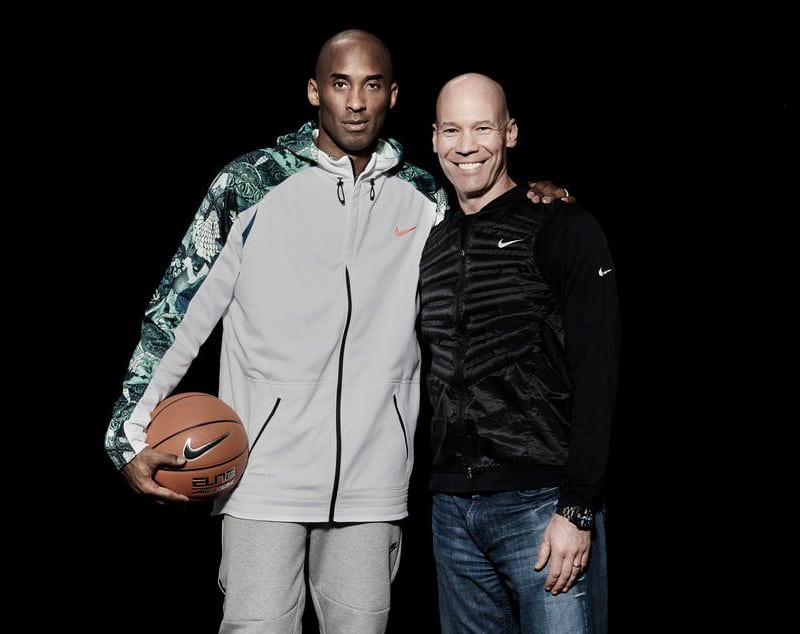 Kobe’s contract guarantees a signature shoe up to 5 years after retirement
Kobe’s contract guarantees a signature shoe up to 5 years after retirement
When Kobe retired in 2016 and left the game for good, Nike made one thing clear, his sneaker line wasn’t going anywhere. Walking away from the NBA in his 11th signature shoe, his contract actually calls for the continuation of his Kobe series until at least 2021, for an additional five years. It’s entirely possible the series, along with retro models, lives on well after that date, of course.
While the numbered models became much loved during his career, his series has of course now transitioned into the AD phase, which is made up of traditionally designed AD models all featuring common Kobe design language, along with the AD NXT, which is meant to represent the concept car of sorts for the line.
While Bryant is off writing scripts, investing in a variety of new projects and far removed from shooting a basketball any time soon, he’s still hands on with his sneaker series, tapping in with his Nike team on several occasions throughout the year, working up ideas for the next few AD models on the way.
“We create stuff that you’re just not gonna see on the shelf like any generic shoe, because it’s not a generic shoe,” Bryant said early on of his series. “It’s me and we fit our personality into the shoe, so it can’t be a shoe that looks like a LeBron shoe or whoever else’s shoe. It has to be a shoe that’s you and is your special shoe.”
